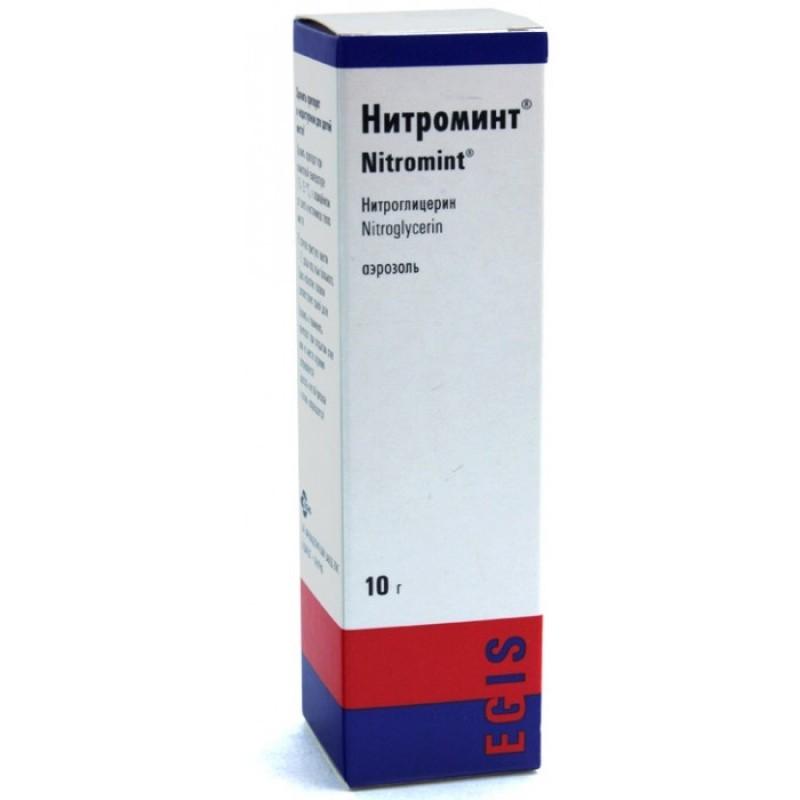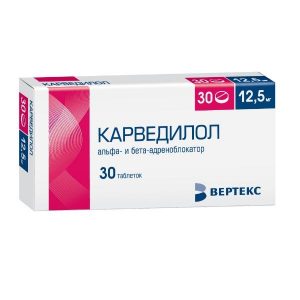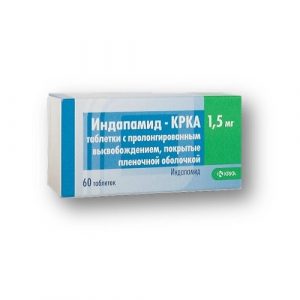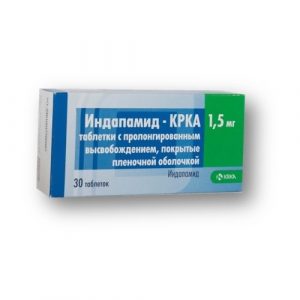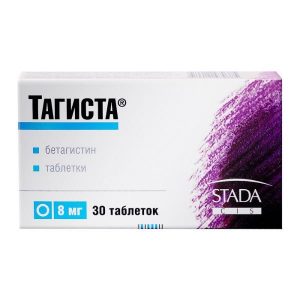Description
Release form
Aerosol sublingual dosed.
10 g
packaging
Pharmacological action
Nitromint is a peripheral vasodilator with a primary effect on venous vessels, an antianginal drug. Nitroglycerin is an organic nitrogen-containing compound with a predominant venodilating effect.
The effects of nitroglycerin are due to the ability to release nitric oxide from its molecule, which is a natural endothelial relaxing factor. Nitric oxide activates the enzyme guanylate cyclase, which leads to an increase in the intracellular level of cGMP, this prevents the penetration of calcium ions into smooth muscle cells and causes their relaxation.
Relaxation of the smooth muscles of the vascular wall causes vasodilation, which reduces venous return to the heart (preload) and resistance to a large circle of blood circulation (afterload). This reduces heart function and myocardial oxygen demand. The expansion of the coronary vessels improves coronary blood flow and contributes to its redistribution in the area with reduced blood supply, which increases the delivery of oxygen to the myocardium. A decrease in venous return leads to a decrease in filling pressure, an improvement in blood supply to the subendocardial layers, a decrease in pressure in the pulmonary circulation and a regression of symptoms in pulmonary edema. Nitroglycerin has a central inhibitory effect on the sympathetic vascular tone, inhibiting the vascular component of the formation of pain. Nitroglycerin also relaxes the smooth muscle cells of the bronchi, urinary tract, gall bladder, bile ducts, esophagus, small and large intestines, as well as their sphincters.
The action of Nitromint begins quickly, the effect develops within 1-1.5 minutes and lasts about 30 minutes.
Indications
– angina pectoris (relief and prevention of seizures, including before exercise)
– acute left ventricular failure (as part of combination therapy).
Use during pregnancy and lactation
During pregnancy and during lactation, the use of the drug Nitromint is possible under strict medical supervision in cases where the intended benefits of therapy for the mother outweigh the potential risk to the fetus or infant.
It is not known whether nitroglycerin is excreted in breast milk.
Special instructions
NitromintВ® enhances the excretion of catecholamines and vanillin-mindal acid in the urine.
During the use of the drug, the patient should exclude the use of alcohol.
Use in pediatrics
The drug is contraindicated for use in children and adolescents under the age of 18 years, because safety data for Nitromint in this category of patients is insufficient.
Influence on the ability to drive vehicles and control mechanisms
At the beginning of treatment, it is necessary to refrain from driving vehicles and engaging in potentially dangerous activities that require an increased concentration of attention and speed of psychomotor reactions. In the future, the degree of restriction is determined individually for each patient.
Composition
1 dose: – nitroglycerin (as a 1% solution) 400 mcg
Excipients: ethanol, propylene glycol.
Dosage and administration
The drug Nitromint is used sublingually.
Before first use, fill the metering pump by removing the protective cap and pressing the metering valve several times until an aerosol appears. After a long break in the use of the bottle, it may be necessary to refill the pump. When using the cylinder should be held upright, spray head up.
Each time you press the metering valve, 1 dose (400 micrograms of nitroglycerin) is released as an aerosol from a cylinder equipped with a mechanical pump.
Shaking the bottle before use is not required.
To relieve an attack of angina pectoris, 400-800 mcg (1-2 doses) is applied sublingually by pressing the metering valve, preferably in a sitting position, if you hold your breath at intervals of 30 seconds after that, you should close your mouth for a few seconds. If necessary, the drug Nitromint is re-administered, but not more than 1.2 mg (3 doses) for 15 minutes.
To prevent the development of an attack, 400 mcg (1 dose) is applied sublingually 5-10 minutes before exercise.
In acute left ventricular failure, developing pulmonary edema, 1.6 mg (4 doses) or more is applied sublingually in a short period of time with strict control of hemodynamics (systolic blood pressure should be more than 100 mmHg).
If the therapeutic effect is insufficient, the same dose can be repeated after 10 minutes.
When using the drug in elderly patients, correction of the dosage regimen is not required.
Side effects of
From the cardiovascular system: dizziness, headache, tachycardia, fever, decreased blood pressure rarely (especially with an overdose) – orthostatic collapse, cyanosis.
From the digestive system: dry mouth rarely – nausea, vomiting, abdominal pain.
From the side of the central nervous system: weakness, rarely anxiety, psychotic reactions, lethargy, disorientation.
Allergic reactions: rarely – skin rash, itching.
Local reactions: flushing of the skin, burning under the tongue.
Other: rarely – blurred vision, hypothermia, methemoglobinemia.
Drug interactions
Other vasodilators and antihypertensive drugs (beta-blockers, slow calcium channel blockers), ACE inhibitors, antipsychotics, tricyclic antidepressants, MAO inhibitors, phosphodiesterase inhibitors, etroquinoline, proquinidine, proquinidine, and proquinoline
Nitromint® enhances the effect of dihydroergotamine and reduces the effectiveness of heparin.
Overdose
Symptoms: headache, decreased blood pressure, orthostatic hypotension, reflex tachycardia, dizziness, redness, vomiting and diarrhea, asthenia, increased drowsiness, feeling of heat. Methemoglobinemia is observed at excessively high doses (greater than 20 mg / kg), cyanosis, dyspnoea and tachypnoea, orthostatic collapse.
Treatment: in mild cases – transfer of the patient to the position of lying with his legs elevated in severe cases – carrying out symptomatic and supportive therapy aimed at eliminating intoxication and shock (including the replacement of BCC, the introduction of norepinephrine (norepinephrine) and / or dorepinephrine) . The use of epinephrine (adrenaline) is contraindicated.
In the development of methemoglobinemia, the following antidotes and treatments can be used: 1. Ascorbic acid – 1 g in the form of sodium salt inside or in / in.
2. Methylene blue in / in a dose of up to 50 ml of 1% solution.
3. Toluidine blue I / O, first dose 2-4 mg / kg, then repeatedly at 2 mg / kg.
4. Oxygen therapy, hemodialysis, blood transfusion.
Deystvuyuschee substances
Nytrohlytseryn
pharmacies over-the-counter conditions without prescription
Form of Treatment
spray podayaz chn y
Indications
Angina
